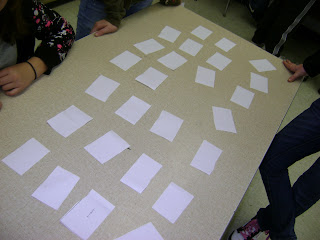Is Your Secret Safe? Think Exponentially
1st: Think and write a secret that you wouldn't want anyone to know about you, aside from a couple of dear close friends
2nd: Think of who those close friends, draw them and write their name under the picture (stickmen will work fine)
Names__________________
3rd: If in one day you tell each of your friends your secret, how many total people (aside from you) now know your secret?
______ total people in ___ day
4th: Now, if the next day each of your friends tell three of their friends, how many people now know your secret (aside from you)? Draw them underneath each of their friends
______ total people in ___days
5th: Now, lets say the following day each of these friends tell three friends. Now how many people know your secret? Draw them
______ total people in ___ days
6th: We can see how fast your rumor can spread right? Theres got to be a better way of calculating who will know your secret.
In Walks Exponents :)
Exponents will quickly allow us to calculate how many people know your rumor
Day 1: 3^1 know your secret
Day 2: 3^2 know your secret (plus your original 3)
Day 3: 3^3 know your secret and so forth (plus your original 9)...
Our equation can be thought of as this
# of people who know your secret = (how many people you tell) raised to the power of (how many people they tell) . As those who are told begin to tell others, the exponent grows. Don forget to factor in the original amount of people :)
Moral of the story? Keep your secrets with you or those you really trust
Additional Questions To Ask?
How long till you school or neighborhood knows your secret?
How long till the country know your secret?
How long till the world knows your secret?




























































